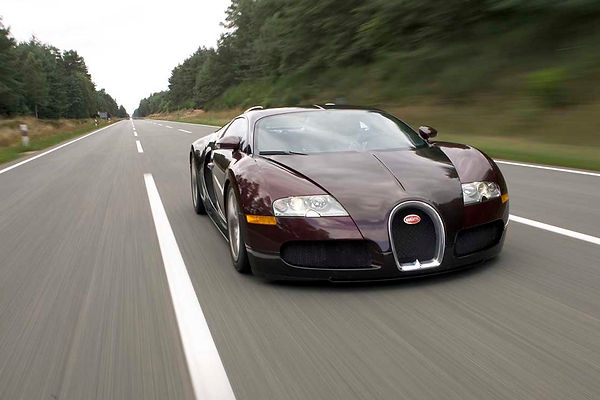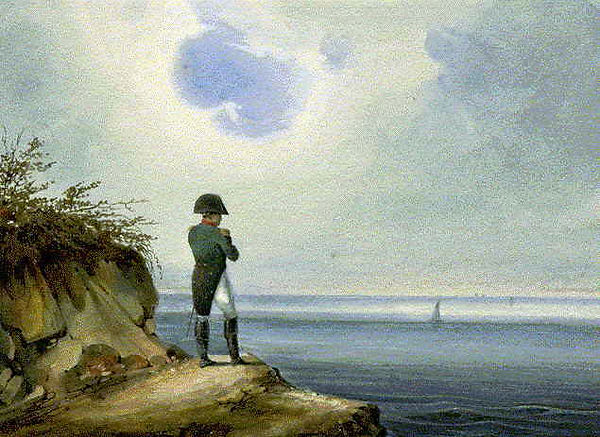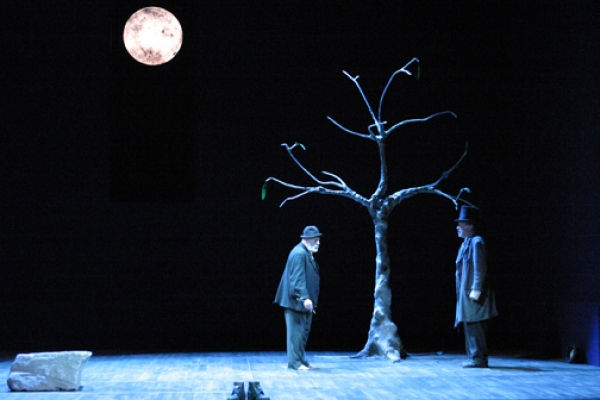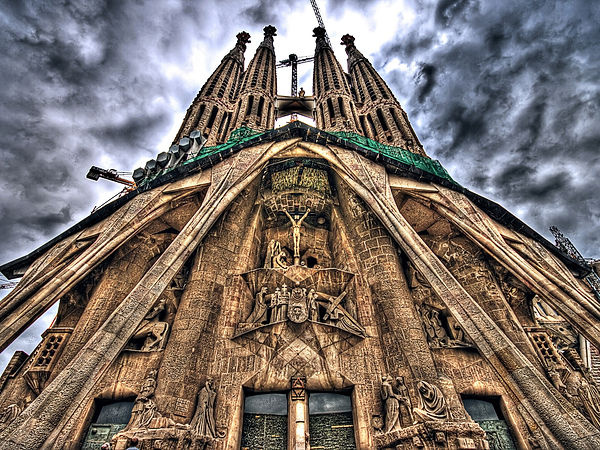
HARRISON BOUDAKIN
THE BUGATTI VEYRON
A EULOGY OF SPEED, POWER, CONFIDENCE. AN EXEGESIS OF A LEGEND.
“Not marble, nor the gilded monuments
Of princes, shall outlive this powerful rhyme;
But you shall shine more bright in these contents
Than unswept stone besmear’d with sluttish time.”
So begins Shakespeare’s revered ‘Sonnet 55,’ instantly capturing some of mankind’s most profound thoughts on the mortality and immortality of love over time. In ’55,’ one is made quite aware that the words we use to describe what we love will last only mere moments in comparison to the love we feel for the the thing itself. So, with this in mind, consider: how to venerate a legend? A vehicle who’s decadal reign has produced innumerable exaltations of its genius and its power. To ascribe the word quantum to the size of its engineering leap is akin to the use of the term mediocre. Nothing in my lifetime has come close to paralleling its impact and its aura. And yet, and yet - the Bugatti Veyron is a quiet victim of the close of 2015. How so?

For those witness to its passing, the ending has seemed almost Napoleonic on account of its silence - so detached, as if the great beast itself had whisked itself to the automotive equivalent of the fabled island of Saint Helena. There it was - a lone and faded genius watching, turmoil unfurling in the far off world it once commanded. It was quiet at the dawn of a new age of hybrid hypercar, as McLaren, Porsche and Ferrari warred feverishly with the P1, the 918 and the quizzically-titled LaFerrari to the point of infernally meaningless quibble over lap times and the integrity of each other’s performance claims. Quiet it was, too, as its visionary, the mythical Dr. Ferdinand Piech, committed corporate hari kari and slipped away from the might of the Volkswagen Empire that founded the great beast’s creation. And it was inaudible as the Empire itself imploded and swayed under the weight of the corporate and PR cataclysm that was the Volkswagen diesel emissions debacle. So to imagine the Veyron in the dying moments of 2015 is to visualise it forlorn, staring out to sea in a lonely gaze: exuding power, yet commanding none.

So what is it, this Veyron? Why has this achievement, seemingly more than any other on the engineering spectrum of the 21st century, captured so many hearts, speared its way into the minds of so many, and spurned any rival that dared come close? Yes, 987 Imperial Horsepower was stunning - though intriguingly, the hallowed 1,001 PS figure derives from the slightly looser Gallic scale, and the later, dramatically re-engineered Super Sports took that to an all-new 1,183 BHP. But, as has been intoned with little deviation since 2005, the Veyron’s true achievement is that combination of contradictions: the SS’ official top speed of 431km/h is Albert Camus’ Myth of Sisyphus on the scale of the absurd. And yet the 1,888kg, all-wheel-drive bug Français was docile enough in its handling composure and controls characteristics to the point where it may as well have been conceived in the likeness of Camus himself. It seemed to bring out that strongly human contradiction between a desire for significance through an absolutely meaningful goal (“1000PS, 400km/h, one million Euros!” demanded Dr. Piech) and the silent, cold universe that is the reality of physics, which so nearly brought the project to the brink of extinction.
Much has been made of the Veyron’s difficult birth, beset by the ‘removal’ of the original Mr. Bugatti, Dr. Neuman, in frustration at one and a half years of failure pushing the outside of the engineering envelope towards waters previously uncharted in the history of the road car. To the engineering team, working under the almost Messianic Piech must have made for an experience as profound and confounding as that of Vladimir and Estragon's in Beckett’s Waiting for Godot, who occupy their time, waiting, waiting and expectant, always at some point questioning and uncertain if what they were waiting for, what they sought, was real. Could it be really be achieved? At moments in the Veyron’s gestation, the arrival of Godot himself must have seemed more likely than attaining that elusive 400km/h vision. One would like to think that in the dark moments of 2003, after the first roadworthy prototype Veyron failed to produce a 400km/h maximum velocity, the engineers stood together next to test vehicle, and looked at each other with that disarming, bizarre combination of hope and resignation that Beckett conjures beneath the leafless tree. “It is true,” one may even have uttered, “that when with folded arms we weigh the pros and cons we are no less a credit to our species. The tiger bounds to the help of his congeners without the least reflexion, or else he slinks away into the depths of the thickets. But that is not the question. What are we doing here, that is the question. And we are blessed in this, that we happen to know the answer. Yes, in the immense confusion one thing alone is clear. We are waiting for Godot to come -- ”

In reality, the clarity of Piech’s vision was indeed, simultaneously, a blessing and a source of immense confusion. The Tsar of the People’s Car Empire ushered in Dr. Wolfgang Schreiber - Mr. DSG gearbox - as Chief Engineer, and Thomas Bscher as President. And so, in 2005, having thrown to waste and re-engineered 95% of the original components, the implacable Piech’s pipe dream came true, and the critical acclaim was as unanimous as it was eulogistic. “A Concorde moment,” in the words of one writer. To all who drove it, the breadth of its ability allied with the staggering magnitude of its sheer numbers worked to stun the notoriously pernickety members of the automotive journalism profession. It seemed that for one moment, the world’s motoring commentators were calling to each other in the most Euhermeristic, Socratic way: “Tell me, in the name of Zeus,” they must have cried, “do you really believe that the legend is true?” It was, and the EB16.4 prevailed over a production run of ten years, 450 cars and a myriad of iterations of the essential Veyron theme.
But, funnily, as an official world beater, the Veyron’s tenure seemed to fall prey to King Henry IV’s psychoanalysis of premiership, “Uneasy lies the head that wears the crown.” The 2005 top speed run that blasted the Veyron into the annals of history at 407km/h never saw the light of a Guinness World Record verification, and it was only in 2010 that the revised Super Sports variant would achieve such a commendation. Even then, amidst controversy and a procession of low-volume competitors that tussled and toiled to wrest the spoils of victory from the Franco-German, somehow the Veyron clung to the épithète of World’s Fastest Car in the hearts and minds of most. In an almost sadistic taunt, at a point the official record was stripped from - and later returned to - the Veyron, when for a moment it was instead gushed upon the American Hennessey GT, over cavilings about speed limiters and the relationship between the tested vehicle and those models sold to the public. But in the greatest Nihilistic tradition of Nietzsche, every belief, every record, every considering something true or empirically better was in fact necessarily false, because there was simply no true world in the world of the Veyron. And it is at this juncture one must consider the most pressing of all questions - why this collapse of meaning, relevance and purpose of all others around this swirling phantom? Was it the clutching, deceptive aura of legitimacy afforded by name, status, wealth, reputation? No. It was much more than that. It was a deeply rooted, seductive synthesis of absolute engineering integrity through peerless design and the uncorrupted application of money-no-limits thinking, with something else. St. Thomas Aquinas, OP, put forth in Summa Theologica, the difficulty of comprehending omnipotence. "All confess that God is omnipotent;” he said, “but it seems difficult to explain in what His omnipotence precisely consists: for there may be doubt as to the precise meaning of the word 'all' when we say that God can do all things. If, however, we consider the matter aright, since power is said in reference to possible things, this phrase, 'God can do all things,' is rightly understood to mean that God can do all things that are possible; and for this reason He is said to be omnipotent.”

In other words, absolute power is understood in compatibility with limitations and restrictions. And thence, it is not simply that the Veyron achieved what it was expected to achieve, which bears its glorious infallibility. Rather, it is that it not only accepted the limitations imposed on it, but redefined them to the point where it created virtue from vice. Drivability, refinement, all the inherent pragmatisms of basic motoring; these were fulfilled in a genre that was previously defined by its blatant ignorance of them. The fact that this phenomena occurred in a vehicle that rendered all others insignificant in what they singularly stood for - speed, power, confidence - guarantees the Veyron’s omnipotence. In describing the death of Sylvia Plath, Ted Hughes comes closest to ascribing words to this complete desertion of competition from the first. After the Veyron, it may be said, “the rest is posthumous.” Thus, if we return, as it were, to Shakespeare’s, ‘Sonnet 55,’ one may understand the basis for the Veyron’s Last Judgement:
“So, till the judgment that yourself arise,
You live in this, and dwell in lovers' eyes.”
Simply, it is really only Bugatti who might revise the history of this, possibly one of the greatest of all automobiles - and such a judgement remains to be seen in the form of the Veyron’s successor, the Chiron. Even at this, though, one doubts the sheer enormity, the violent impact, the absurd thew of the Veyron will ever be touched; rather, it will only be added to. Maybe Rolande Barthes was right - cars are our cathedrals, “the supreme creation of an era, conceived with passion by unknown artists, and consumed in image if not in usage by a whole population which appropriates them as a purely magical object.” Inasmuch, then, the Veyron can only be Gaudi’s great, unfinished masterpiece, Sagrada Familia. Both remain unfinished philosophically because their ruthless audacity does not deserve the destiny of an end.
So what should one take from this reading? Let us draw inspiration from the words of literary critic Harold Hobson. Go and see the Veyron. At the worst, you will discover a curiosity, a four-wheeled four-leaved clover, an idiosyncratic black tulip of French origin and German resolve. At best, though, you will discover something that will securely lodge itself in a corner of your mind for as long as you live.

Thank you, then, Volkswagen. Hubris may have shaken you to the core of late, but the ascent to the zenith of dominance along the way has produced a menacing spirit steeped in the beauty of vaulting ambition. Thank you, Dr. Piech. If one is to eulogise your ‘passing,’ then the Veyron stands as your eternal legacy, a monument to your flawed, Elysian genius. And thank you, the designers and engineers from whose labours the fruit of Piech’s seed came forth. It is the words of Vladimir and Estragon that best surmise your raison d’être:
“We always find something, eh, Didi, to give us the impression we exist?”
“Yes, yes, we’re magicians.”
